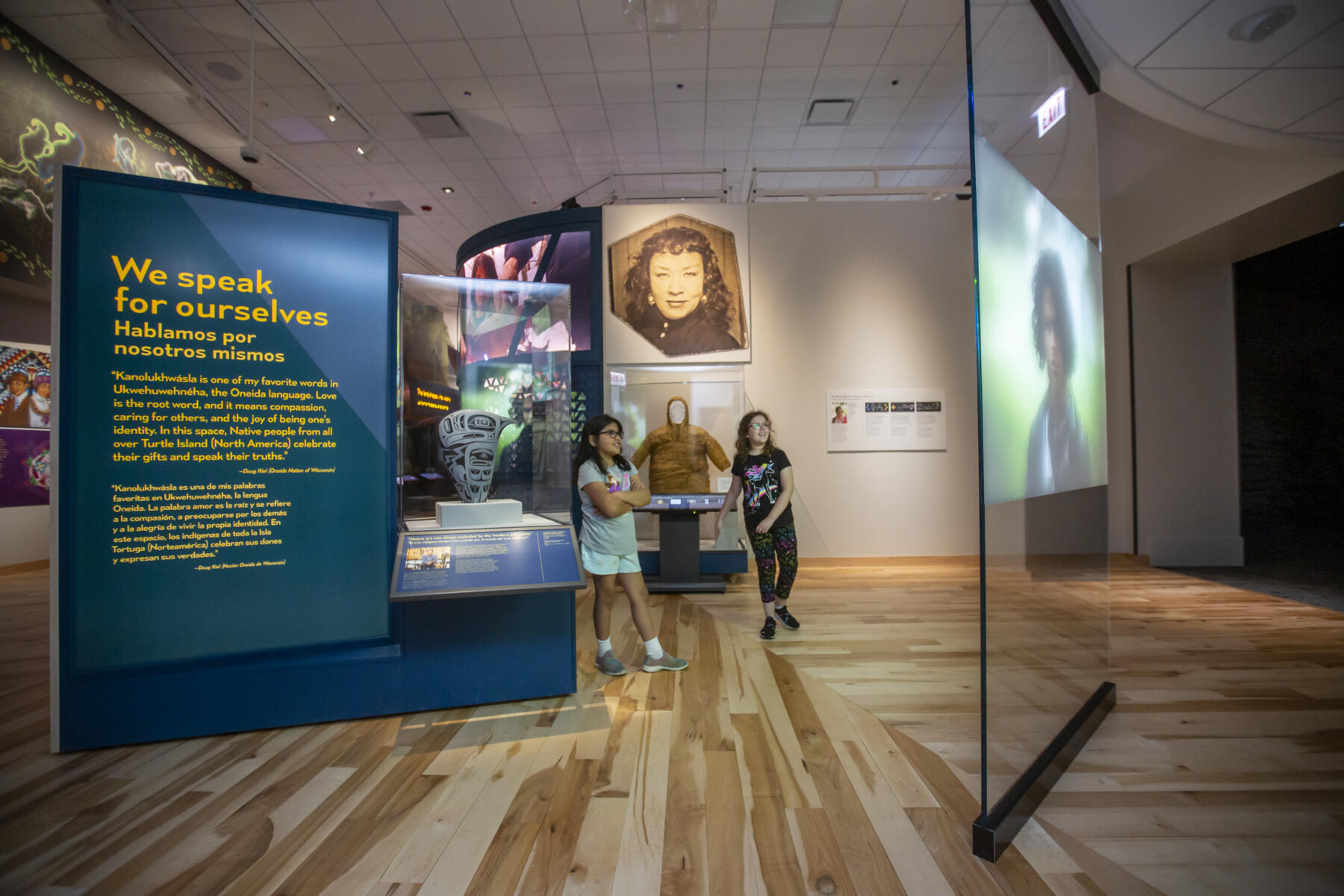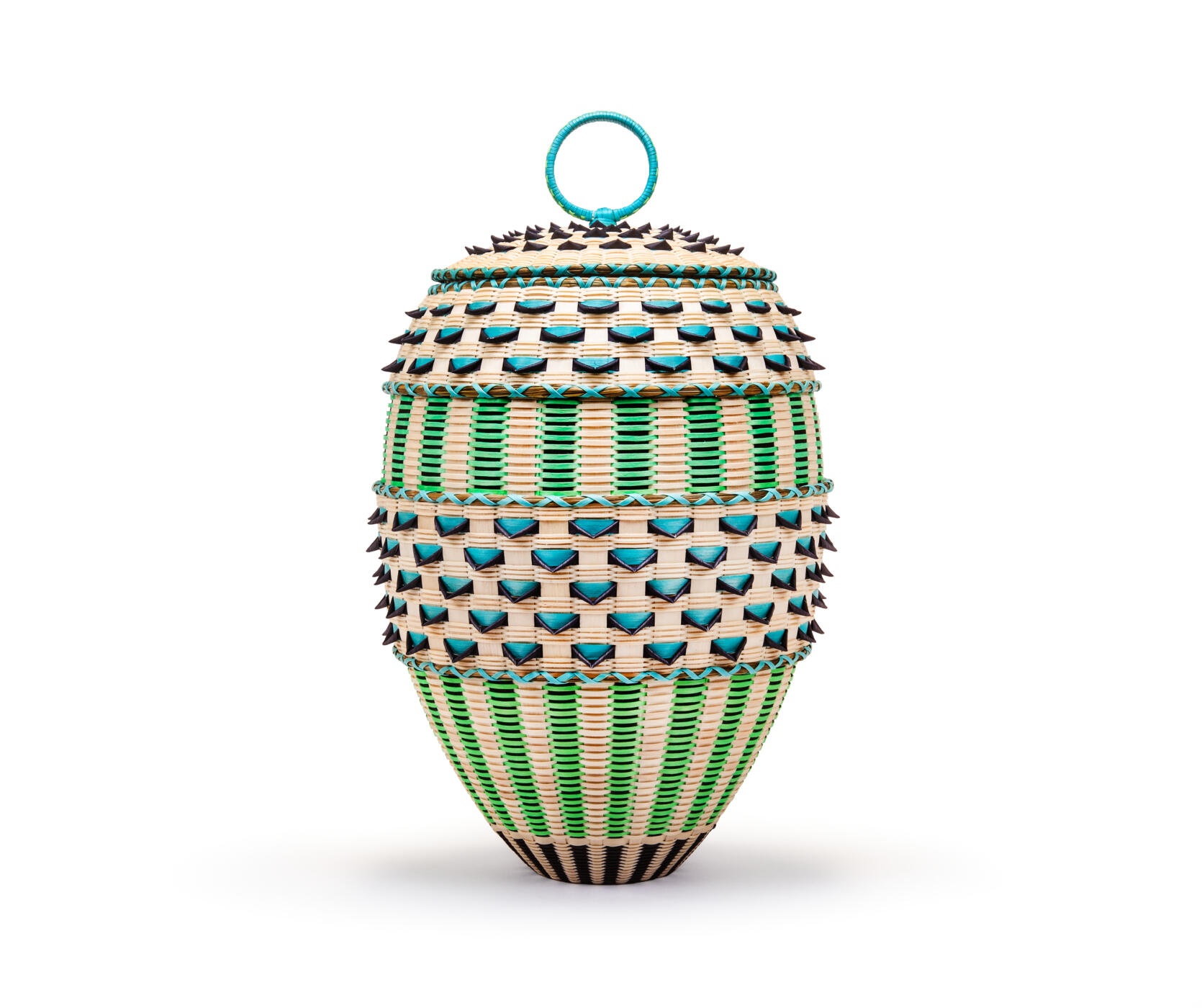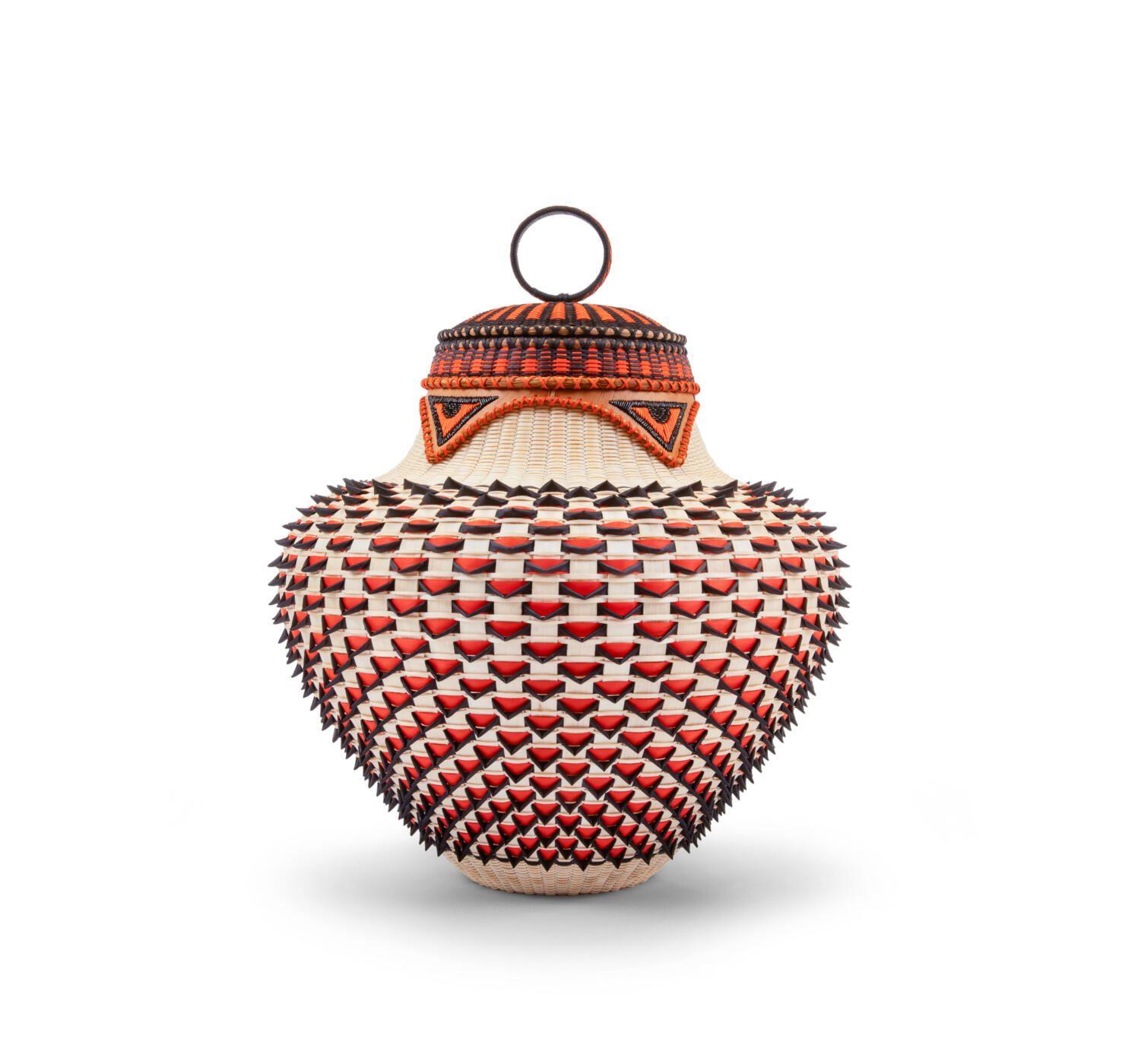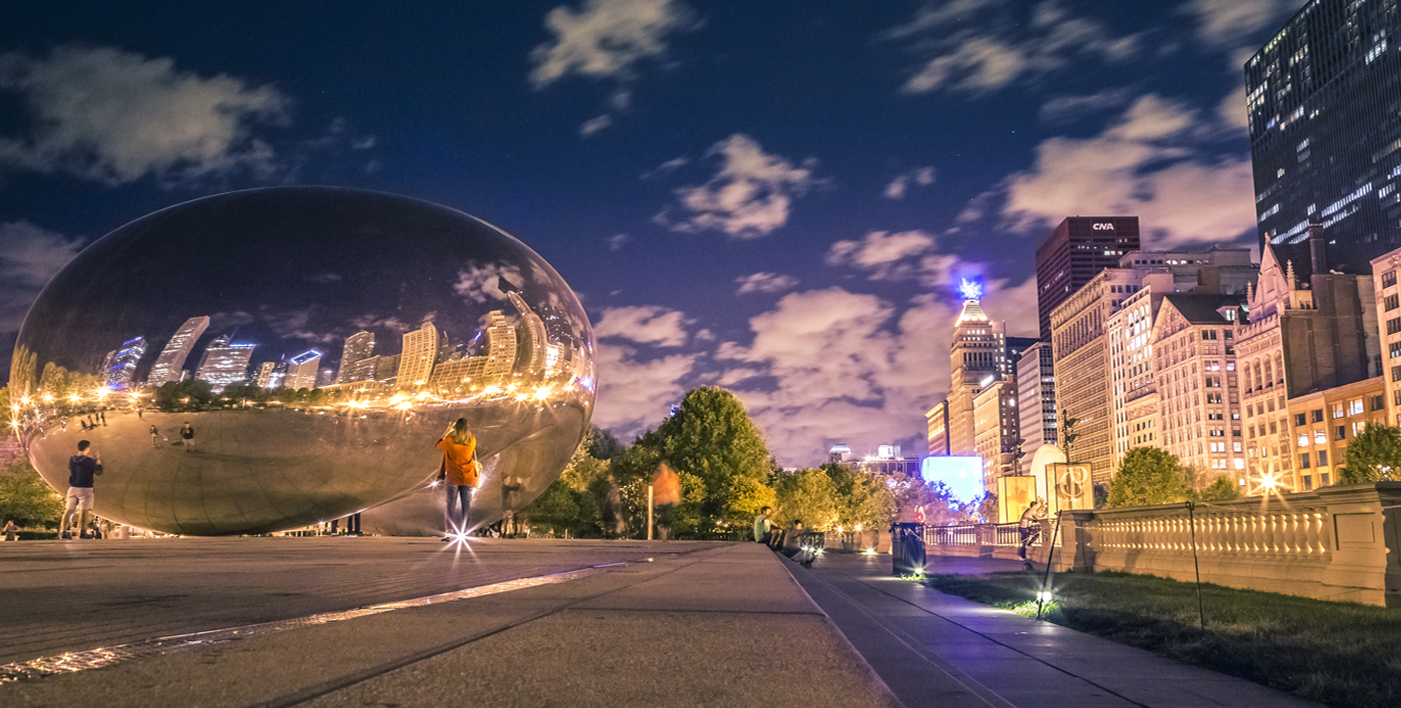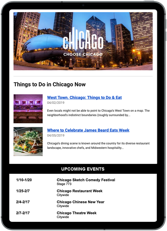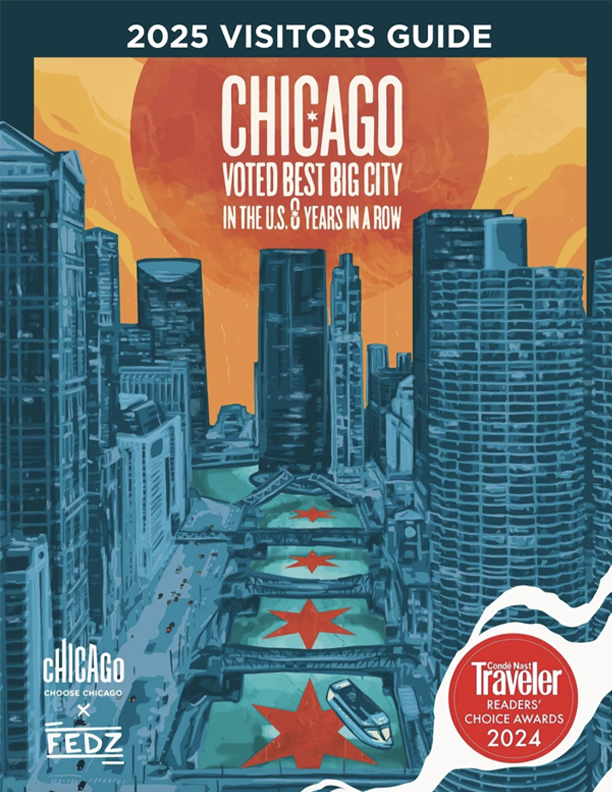November is Native American Heritage Month, a time for highlighting, reflecting on, and celebrating Native history, art, and culture.
I moved from Cherokee Nation to Zhygagoynak (Chicago) several years ago to work with cultural institutions like museums that were seeking to display indigenous art. In that time, I’ve seen the Native contemporary art scene flourish in the city, leading to an impressive number of exhibits on view across the city’s many cultural institutions.
So if you’re looking for a way to discover something new or just trying keep up with all the exhibitions around town, you’ve come to the right place! Here are some of Chicago museums hosting upcoming exhibits showcasing Indigenous art and artists.
Center for Native Futures
Drop by the Center for Native Futures in the Marquette building in the Loop to see three exhibitions all in one building.
The first to check out is Gagizhibaajiwan (now open through Dec. 31, 2024), which features the works of four Indigenous artists and focuses on the relationship of Misshepezhieu, the Underwater Panther, and Animikii, the Thunderbird. The title, Gagizhibaajiwan, is an Anishinaabe word to describe the rippling of water that proceeds an emergence or follows a submergence. The show explores paradox and duality in all kinds of media; be sure to scan the QR codes to hear the artists talk about their own work.
Within the gallery, you’ll also find The Upsetters: A Painting Exhibition (now open through Jan. 18, 2025). This exhibition features five painters from a variety of stylistic approaches. These collective works focus more on the medium than the message. This has a hands-off format for curation, it focuses solely on the artist’s voices and opinions on their art and allows the viewer to form connections.
Finally, Nwi Yathmomen is a permanent installation curated by Andrea Carlson (Grand Portage Ojibwe/European descent) and John Low (Pokagon Band of Potawatomi). The exhibit, whose title translates to “We Tell Our Stories”, was built to intervene in the interpretation of the murals in the lobby and bring back into focus contemporary images of Indigenous folks connected to and living in Chicago today. Be sure to see its innovation on wigwams as an architectural shape that can blend beautifully into and modernize the historic building.
Art Institute of Chicago
While you’re in the Loop, make your way to the Art Institute of Chicago to see Jeremy Frey: Woven (now open through Feb. 10). This exhibition is a traveling, mid-career, retrospective for the artist who focuses intently on the complexity of form, shape, and color present in his traditional Passamaquoddy basket-weaving technique. Be sure to see the porcupine quill animals present on some of the lids of these amazing baskets.
Newberry Library
Head to the Newberry Library to see Indigenous Chicago (open through Jan. 4), an exhibition that displays mostly paper-based objects like maps and journals to tell the history of displacement and community-building in Chicago from an archival perspective. Be sure to see the contemporary artists on view, such as Jason Wesaw and Camille Billie.
Museum of Contemporary Art
Also near The Magnificent Mile, you can see Andrea Carlson: Shimmer on Horizons (open through Feb. 2) at the Museum of Contemporary Art. Andrea is a co-founder of Center for Native Futures and a curator for the Nwi Yathmomen exhibition, but she also has her own practice of large-scale works on paper. This exhibition covers Indigenous futurism, and the name refers to the hope of something you can see in the distance.
Gichigamiin Indigenous Nations Museum
The Gichigamiin Indigenous Nations Museum in Evanston (formerly the Mitchell Museum) is the only Native American-run museum in Chicagoland. It currently has an exhibit on murdered and missing Indigenous women titled No Rest: The Epidemic of Stolen Indigenous Women, Girls, and 2Spirits (closes Dec. 31).
They also recently announced that they will be opening a new exhibition, Living Stories: Contemporary Woodland Native American Art, this spring so be sure to check back for more information as it comes out.
Field Museum
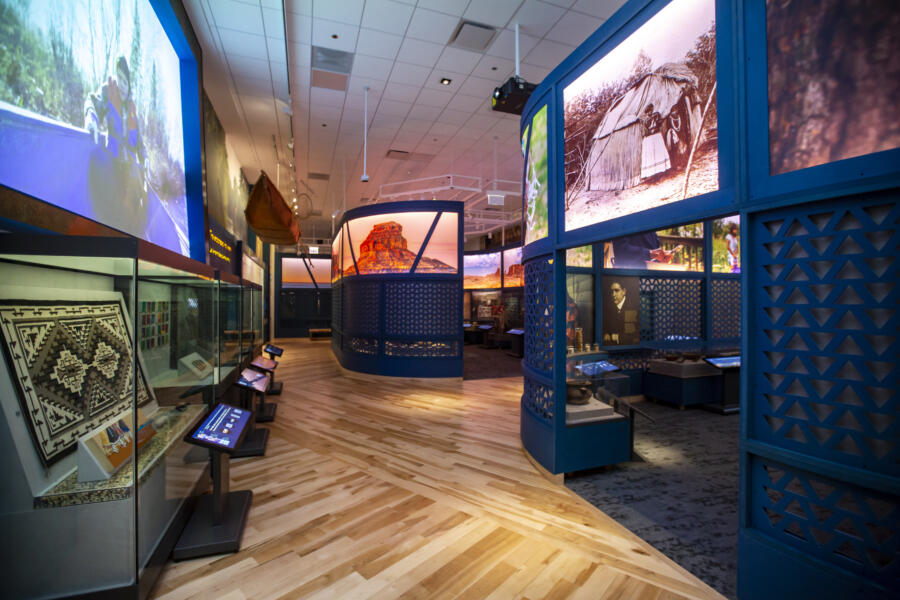
The Field Museum has a permanent exhibition called Native Truths: Our Voices, Our Stories that covers current and past Indigenous Chicago. It features specific circles of Indigenous life and culture, including hip-hop music, pottery, and heritage seeds and seed banks. These are alongside long-term installations on repatriation concerns, displacement, and current Native film and art.
It’s an ambitious exhibition that was made in collaboration with Native folks all over the United States, but I would caution visitors from continuing into the older Alsdorf Hall of Northwest and Arctic Peoples as it still contains forms of display and objects that can make one uncomfortable. Museums have come a long way but still have a long way to go and progress can be slow, please take care of yourself.
The Block Museum of Art
The Block Museum is Northwestern University’s art museum in Evanston, just north of Chicago. It has a show debuting early next year called Woven Being: Art for Zhegagoynak (opens Jan. 25), which features four anchor artists: Andrea Carlson, Kelly Church (Match-E-Be-Nash-She-Wish Tribe of Pottawatomi/Ottawa), Nora Moore Lloyd (Lac Courte Oreilles Band of Lake Superior Ojibwe), and Jason Wesaw (Pokagon Band of Potawatomi), and elaborates on their relationship to Chicagoland and the artistic connections and influences of their community.
National Public Housing Museum
The National Public Housing Museum’s show Still Here: Linking Histories of Displacement (now open through April 20) seeks to bring voice to the stories of Black and Native families who have experienced displacement’s far-reaching effects.
By reflecting on the devastating impact of apathetic government processes like treaty terms and redlining, the exhibition explores how shared struggle can connect Black and Indigenous histories and open up avenues for dialogue and solidarity across communities today and into the future. The exhibit also includes Andrea Carlson’s public art installation Still Here: Zhegagoynak, which is located on the outside of the building.
I hope you get a chance to explore this explosion of Indigenous contemporary art in all its varied media and meanings, and that you can continue to engage with the city’s vibrant Native community in the future by following some of these artists, curators, and museums work well beyond Native American Heritage Month.

